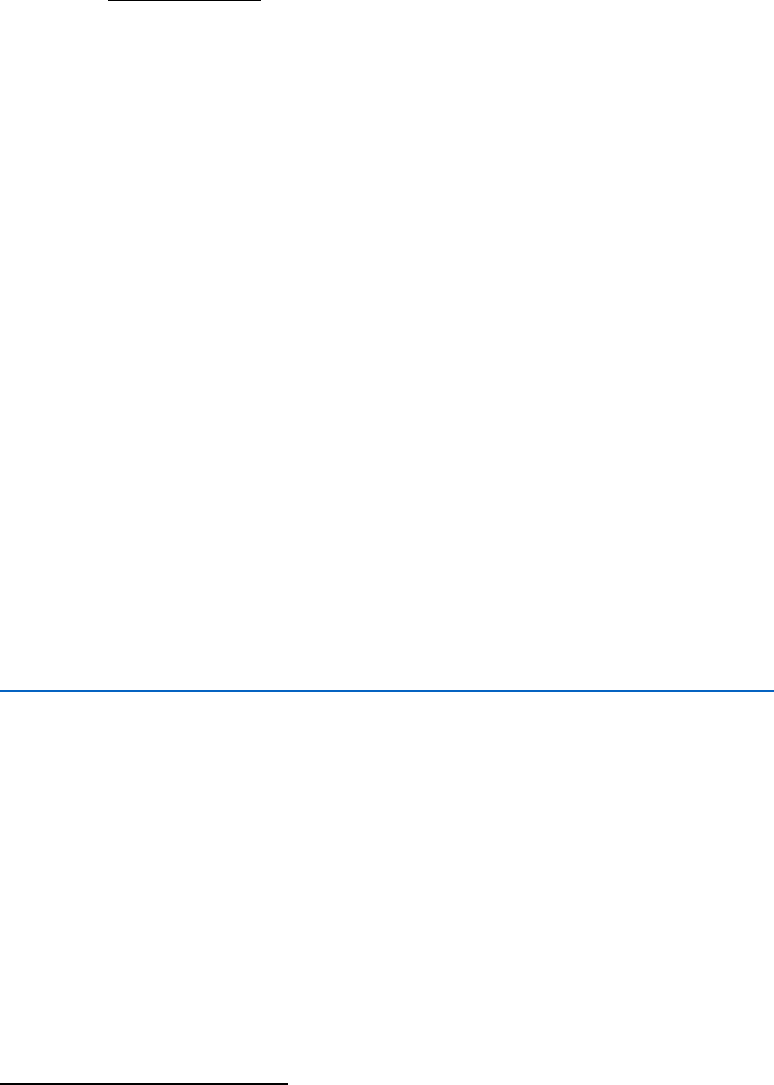
July 10, 2024 -- 1
School of Defense and Strategic Studies
DIRECTED USE OF THE CHICAGO MANUAL OF STYLE
CITATION SYSTEM ON ALL ACADEMIC PAPERS
Effective: July 2024
In order to better standardize academic papers within the DSS programs and prepare our students
for greater success on their thesis papers, non-thesis project papers, and capstone projects, the use
of the Chicago Manual of Style, notes and bibliography system, is the school standard for all
student papers associated with any DSS course. The Chicago Manual of Style is a unique blend of
footnotes and bibliography that offers a comprehensive approach to academic integrity by
acknowledging intellectual obligations while providing a clear trail of evidence for scholarly
arguments.
Researchers and writers are required to present their work accurately and adduce where their proof
came from. It is important to cite or reference other peoples’ work because it allows readers to
easily track down the sources of information and verify the accuracy of the information presented.
Additionally, citing work properly credits the original authors and avoids plagiarism. Overall,
citing work using footnotes enhances the credibility and reliability of the writer’s own work.
Why is the Chicago Manual of Style Format Important?
1
• Academic Integrity: Adhering to Chicago Manual of Style ensures the writer’s academic work
is accurate, organized, and consistent. This helps readers easily locate and verify the writer’s
sources, enhancing the credibility of the associated research. By utilizing footnotes, the writer
exhibits academic honesty, avoids plagiarism, and acknowledges the intellectual contributions
of others.
2
• Standardization: The Chicago Manual of Style has guidelines and practices for organizing
citations, footnotes, and bibliography entries. This guarantees that the author’s writing is
coherent, uniform, and easy for readers to access. Adhering to the Chicago Manual of Style
establishes a consistent method for recording sources, simplifying communication and
collaboration among researchers and academics.
3
1
John W. Tutor, “Chicago Style Format: All You Need To Know,” Domyessay.com, January 28, 2021,
https://domyessay.com/blog/chicago-style-format
2
Tutor, “Chicago Style Format:”
3
Tutor, “Chicago Style Format:”

July 10, 2024 -- 2
• Acknowledging Contributors: The Chicago Manual of Style includes detailed information
about the sources used in the writer’s research, acknowledging the contributions of other
scholars and researchers.
4
• Flexibility: The Chicago Manual of Style paper format accommodates a wide range of sources,
including books, articles, websites, and multimedia. It provides guidelines for citing different
types of sources accurately.
5
DSS papers should always convey a footnote citation in the following instances:
6
• When quoting exact words from a source. Verbatim text must be in double quotation marks
and integrated within the text or in a block quotation (if greater than 4 lines).
7
• When paraphrasing ideas that are associated with a specific source, even if you don’t quote the
exact words.
8
• “When you use any ideas, data, or method attributable to any source you consulted.”
9
The information required in citations must include the following information:
• Who wrote, edited, translated, or otherwise conveyed the cited text, idea, or data. How the
reference is identified. This includes the [book] title and subtitle of the work, title of the journal,
collection, or series the work appeared in, as well as the volume or edition number; and page
number(s) where the work can be found. Who published the work and when. This includes the
name and location of the publisher as well as the date published.
10
• For online sources, where the work can be located. This would be the URL and if necessary,
the date the URL work was accessed.
11
DSS papers using the Chicago Manual of Style format shall include some basic but key
components.
• The Chicago Manual of Style allows for both footnotes or endnotes, with footnotes being the
directed format in the DSS style.
o Footnote references must begin on the same page on which the reference was made.
Footnote references will use superscript numbers (not roman numerals) to indicate citations
at the end of the sentence. Titles of works should be italicized, with the first word and
proper nouns capitalized. Footnotes should be formatted with a smaller font size (Times
New Roman, 10pt), single-spaced, have an indent, and include associated page numbers.
4
Tutor, “Chicago Style Format:”
5
Tutor, “Chicago Style Format:”
6
Kate L. Turabian, A Manual for Writers of Research Papers, Theses, and Dissertations, Ninth Ed. (Chicago:
University of Chicago Press, 2018) 15.2.1.
7
Turabian, A Manual for Writers, 15.2.1, 25.2.2.1.
8
Turabian, A Manual for Writers, 15.2.1.
9
Turabian, A Manual for Writers, 15.2.1.
10
Turabian, A Manual for Writers, 15.2.2.
11
Turabian, A Manual for Writers, 15.2.2.

July 10, 2024 -- 3
o Substantive notes may be footnoted but should be used sparingly.
o Footnotes: Sample Citations
12
▪ Book Examples
• Footnotes (New Times Roman, 10 pt)
o 1. Zadie Smith, Swing Time (New York: Penguin Press, 2016), 315–16.
o 2. Brian Grazer and Charles Fishman, A Curious Mind: The Secret to a Bigger Life (New
York: Simon & Schuster, 2015), 12.
• Shortened notes (New Times Roman, 10 pt)
o 3. Smith, Swing Time, 320.
o 4. Grazer and Fishman, Curious Mind, 37.
• The bibliography, normally placed at the end of the paper, should be in the paper’s font and
size, have a hanging indent, and contain a comprehensive list of all references cited in the
paper’s footnotes, arranged in alphabetical order by the author'(s) last name, first name. Each
entry should include the title of the source, publication details, and publication date.
o Bibliography: Sample Citations
13
• Bibliography entries (in alphabetical order)
o Grazer, Brian, and Charles Fishman. A Curious Mind: The Secret to a
Bigger Life. New York: Simon & Schuster, 2015.
o Smith, Zadie. Swing Time. New York: Penguin Press, 2016.
Students seeking more information on the Chicago Manual of Style format to include sample
citations may wish to acquire a hard copy of the associated style guide form their favorite book
retailer, or visit the Chicago Manual of Style Online website:
https://www.chicagomanualofstyle.org/tools_citationguide/citation-guide-1.html. Online citation
generators are not always accurate, students using these tools should verify their output format.
Again, the use of the Chicago Manual of Style, notes and bibliography system, is directed for all
academic papers. Students with any questions about the specific application of the Chicago
Manual of Style in academic papers or require further information or guidance, it is recommended
that you first seek advice from your current professor. Faculty questions can be directed to me.
John P. Rose
JOHN P. ROSE, Ph.D.
Director, Graduate School of Defense and Strategic Studies
Reynolds College of Arts, Social Sciences, and Humanities
Missouri State University
12
“Notes and Bibliography: Sample Citations,” Chicago Manual of Style Online, accessed June 25, 2024,
https://www.chicagomanualofstyle.org/tools_citationguide/citation-guide-1.html.
13
“Notes and Bibliography: Sample Citations,” Chicago Manual of Style Online, accessed June 25, 2024,
https://www.chicagomanualofstyle.org/tools_citationguide/citation-guide-1.html.
